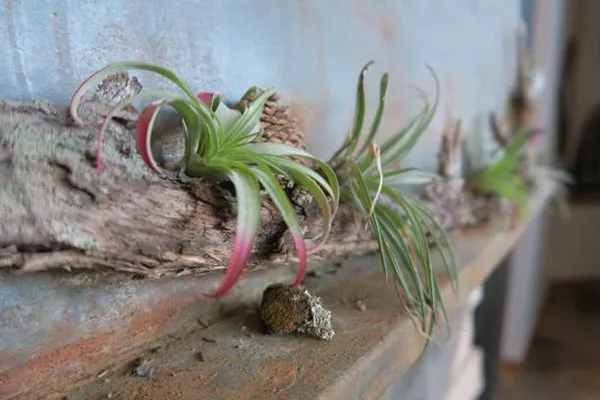Potted plants can bring beauty and nature into our homes, but they can also attract unwanted guests—ants. These tiny insects are not only a nuisance but can also harm your beloved plants by disturbing their roots and leaving unsightly trails. Fortunately, there are several effective strategies to keep ants out of potted plants, allowing your greenery to thrive. In this comprehensive guide, we will explore these methods in detail, ensuring you maintain a pest-free and flourishing indoor or outdoor garden.
1. Choose the Right Soil
Starting with the basics, the type of soil you use can impact whether ants are attracted to your potted plants or not. Ants are drawn to soil that is loose and easy to dig in. To deter them, select a well-draining potting mix that is less conducive to tunneling. Avoid overly damp or organic-rich soils, as these are prime targets for ant infestations.
2. Implement Natural Barriers
Creating a natural barrier around your potted plants is an effective way to keep ants at bay. Consider the following options:
Cinnamon: Sprinkle ground cinnamon around the base of your plant. Ants dislike the strong scent of cinnamon and will avoid crossing it.
Chalk: Draw a chalk line around your pots or write on the pots themselves. Chalk contains calcium carbonate, which ants find inhospitable.
Citrus Peels: Place citrus peels, such as lemon or orange, on the soil’s surface. The scent of citrus acts as a deterrent to ants.
Coffee Grounds: Used coffee grounds can be scattered around the base of your plants. The texture of the grounds disrupts ant trails.
3. Use Ant-Repelling Plants
Nature provides its own solutions. Certain plants, such as mint, peppermint, tansy, and pennyroyal, have natural ant-repelling properties. Planting these herbs in your pots or placing them nearby can discourage ants from approaching your plants. Plus, you get the added benefit of fresh herbs for culinary use.
4. Keep It Clean
Maintaining a clean environment is essential to preventing ant infestations. Ants are attracted to food and moisture sources. Here’s how to keep things tidy:
Remove Fallen Leaves and Debris: Regularly clear away fallen leaves, dead plant matter, and any debris from the surface of the soil. These can provide shelter and food for ants.
Clean Spilled Food: If you’ve been feeding your plants with organic matter like compost or plant food, make sure not to spill any on the ground. Ants will be attracted to these food sources.
Fix Leaks: If you’re watering your plants indoors, make sure you don’t overwater, which can create excess moisture that attracts ants. Fix any leaks or drainage issues in your pots.
5. Elevate Your Pots
Elevating your pots can be an effective strategy to prevent ants from climbing up to your plants. Place a barrier between the pot and the ground, such as a saucer filled with water or a strip of double-sided tape. Ants will have difficulty crossing these barriers to reach your pots.
6. Prune and Inspect Regularly
Regularly inspect your potted plants for signs of ants. Pay close attention to the base of the plant, as well as the leaves and stems. If you notice ant activity, take immediate action. Additionally, pruning your plants to remove dead or decaying material can prevent ants from finding shelter and food sources.
7. Use Ant Baits
If you’re dealing with a persistent ant problem, consider using ant baits. These products contain a lure that attracts ants, which then carry the bait back to their nest. Over time, this can help eliminate the ant colony.
Place ant baits strategically near your potted plants, but not too close to avoid any potential contact with plant roots. Follow the manufacturer’s instructions carefully and keep them out of reach of children and pets.
8. Seal Entry Points
Ants are known for finding their way into even the tiniest openings. To prevent them from reaching your potted plants, inspect the area where you keep your pots and seal any cracks or openings in walls, floors, or windows. Silicone caulk or weatherstripping can be used for this purpose.
9. Repel with Diatomaceous Earth
Diatomaceous earth is a natural substance that consists of fossilized remains of diatoms, which are tiny aquatic organisms. When ants come into contact with diatomaceous earth, it damages their exoskeletons and dehydrates them, ultimately leading to their demise.
To use diatomaceous earth, sprinkle a thin layer around the base of your potted plants or on the soil’s surface. Be cautious not to inhale the dust, and keep it dry, as moisture reduces its effectiveness.
10. Seek Professional Help
If your ant infestation persists despite your best efforts, it may be time to consult with a pest control professional. They can assess the extent of the infestation and provide targeted solutions to eliminate the ant colony without harming your plants or the environment.
In conclusion
keeping ants out of potted plants requires a combination of preventive measures, regular maintenance, and natural repellents. By choosing the right soil, implementing natural barriers, and practicing good hygiene in your gardening routine, you can ensure that ants won’t disrupt the beauty and health of your plants. Remember that persistence and patience are key when dealing with ant infestations, and you can enjoy your thriving potted garden once more.


